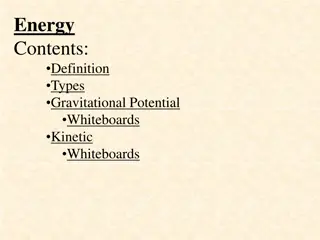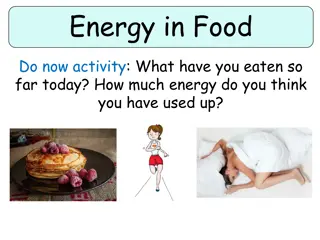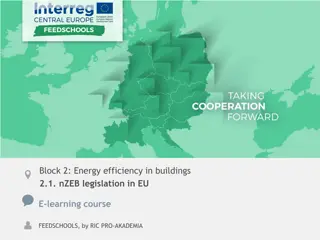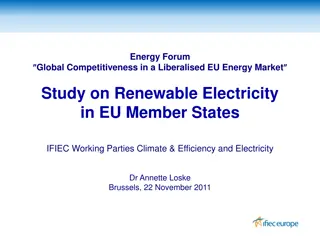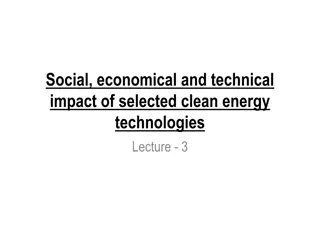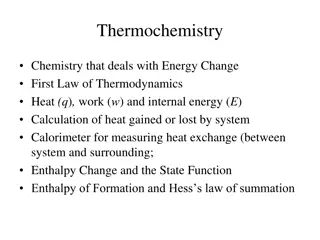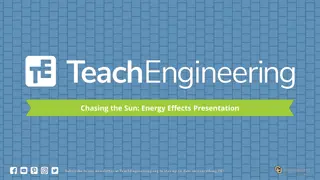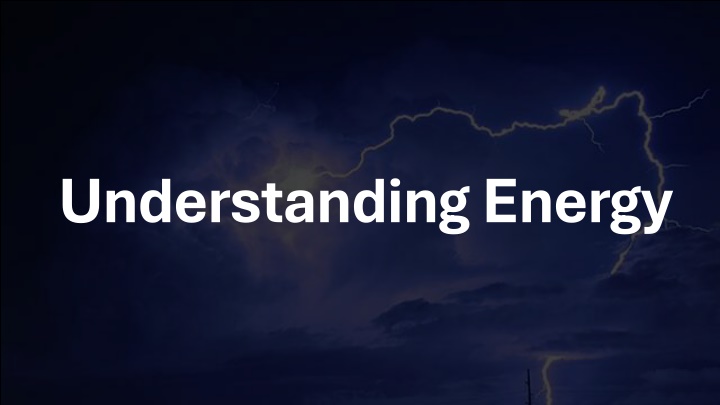
Energy and Thermodynamics in Natural Processes
Explore the concepts of energy, thermodynamics, and natural processes such as combustion, respiration, and photosynthesis. Learn about the laws governing energy exchanges and the efficiency of energy transformations in various systems.
Download Presentation

Please find below an Image/Link to download the presentation.
The content on the website is provided AS IS for your information and personal use only. It may not be sold, licensed, or shared on other websites without obtaining consent from the author. If you encounter any issues during the download, it is possible that the publisher has removed the file from their server.
You are allowed to download the files provided on this website for personal or commercial use, subject to the condition that they are used lawfully. All files are the property of their respective owners.
The content on the website is provided AS IS for your information and personal use only. It may not be sold, licensed, or shared on other websites without obtaining consent from the author.
E N D
Presentation Transcript
Since ancient times, people knew how to harness the energy of moving water. potential energy kinetic energy
First Law of Thermodynamics The change in energy of an object plus the change in energy of the surroundings equals zero ( Eobject + Esurroundings = 0). - - E E - - E E - - E E In other words, the total change energy in an object will always have the opposite sign as that of the surroundings, and the magnitude of this change is the same ( Eobject = - Esurroundings). Balloon car video still from Science Buddies: https://www.sciencebuddies.org/stem-activities/balloon-car
Second Law of Thermodynamics All changes increase entropy. This is often expressed as dissipated heat. This wasteheat cannot be harnessed to do work because it is too spread out. - - E E - - E E In other words, no work can be accomplished with 100% efficiency because dissipated heat makes up a significant portion of the energy that is spent. Since entropy is always increasing, all material objects decay over time. Balloon car video still from Science Buddies: https://www.sciencebuddies.org/stem-activities/balloon-car
Combustion Produces about 400 Cal. heat & light energy Due to the first law of thermodynamics, the energy released from the combustion of sugar equals the energy that goes into the surroundings.
The equation for respiration is identical to that of combustion. Due to the second law of thermodynamics, more than half the energy from respiration is dissipated heat. Cellular Respiration Produces about 160 Cal. of cellular energy and about 240 Cal. of heat energy For comparison, the efficiency of an internal combustion engine is 20%.
Requires about 1570 Cal. light energy to generate 400 Cal. Sugar* Photosynthesis Since the equation for photosynthesis is the reverse of respiration/combustion, it requires an energy input. This input is provided in the form of sunlight. The efficiency of converting this light energy into chemical energy is 25%. *Source: https://www.britannica.com/science/photosynthesis/Proteins
Review Questions 1. What is the purpose of cellular respiration? 2. What process provides the energy needed for cellular respiration? 3. What process synthesizes sugar from carbon dioxide and water? 4. What provides energy for the synthesis of sugar? 5. Why does the consumption of 400 calories of sugar only generate 160 calories of cellular energy?
Review Questions 1. What is the purpose of cellular respiration? It generates energy for our cells. 2. What process provides the energy needed for cellular respiration? the breaking down of sugar 3. What process synthesizes sugar from carbon dioxide and water? photosynthesis 4. What provides energy for the synthesis of sugar? sunlight 5. Why does the consumption of 400 calories of sugar only generate 160 calories of cellular energy? The the remaining energy is expressed as dissipated heat because second law of thermodynamics limits the level of efficiency that is possible.
Acknowledgement: Unless otherwise indicated, all images in this presentation were downloaded from Wikimedia Commons:https://commons.wikimedia.org/wiki/Main_Page



